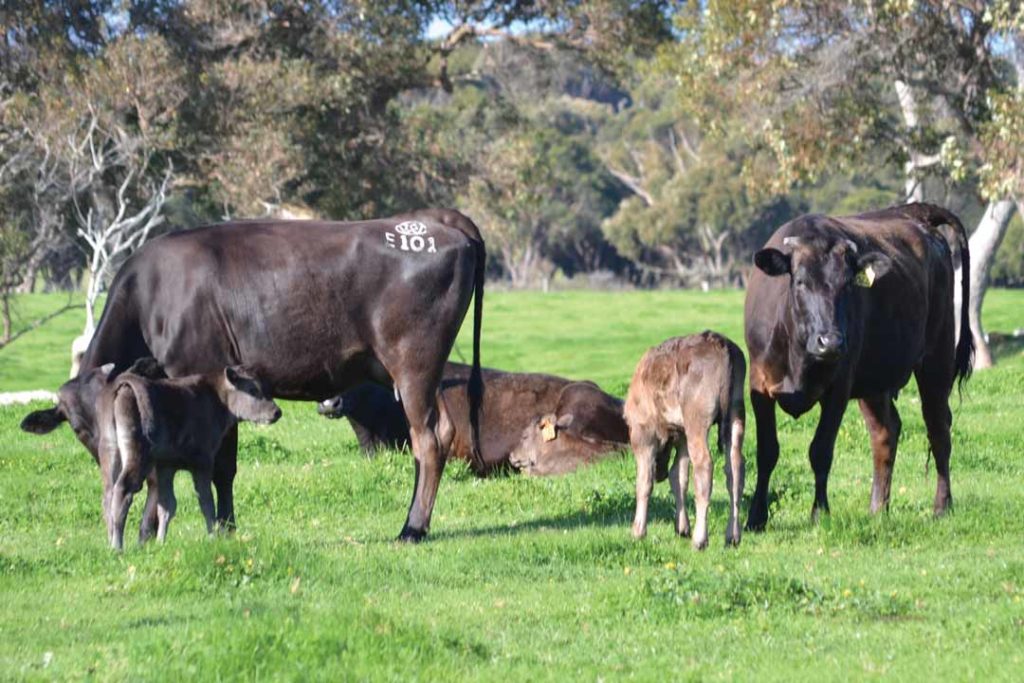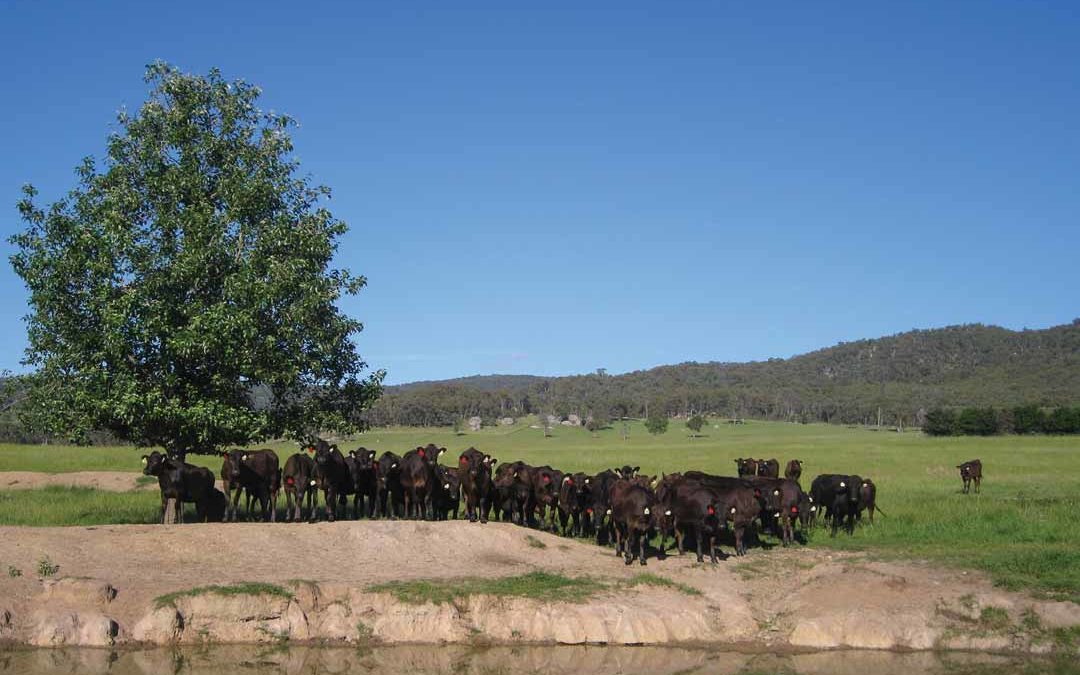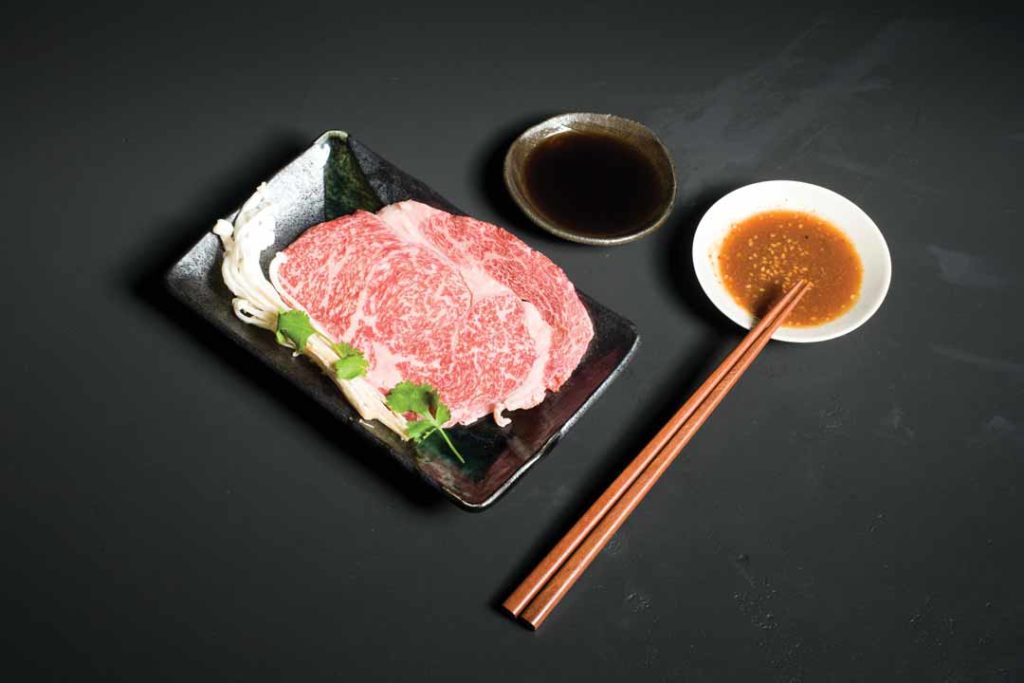Currently in a holding pattern due to reduced profitability, Wagyu beef offers an alternative for cattle producers looking to break out of the commodity beef market.
There is no doubt that Australian beef producers have been doing it tough in recent years. The drought in New South Wales and Queensland has led to skyrocketing feed prices. But while higher grain costs have reduced profitability and seen herd expansion stop, premium Australian Wagyu beef remains a bright spot in the animal agriculture industry.
Why Wagyu beef is better?
So, what is Wagyu beef and how are Wagyu cattle different from common beef breeds such as Angus and Hereford? Wagyu beef is grain-fed to a high degree and is rapidly developing a reputation as a premium product. Indeed, Australian Wagyu beef producer Jack’s Creek held the title of World’s Best Steak Producer for two consecutive years. He also won both World’s Best Sirloin and World’s Best Grain Fed in 2019. Fans of Wagyu say it is almost as different as lamb is to beef; its fine intramuscular marbling of mostly monounsaturated fat has a low melting point which, when cooked, gives the meat an incredibly tender and juicy flavour.
‘Wagyu’ translates simply as ‘Japanese Cow’, and there are four distinct breeds; Japanese black, Japanese polled, Japanese brown and Japanese shorthorn. All four derive from cross-breeding Asian cattle with mostly European and British breeds in the early 20th century. The Japanese black makes up 90 per cent of all fattened cattle in Japan. Most Wagyu in Australia derive from this breed.
While there are Wagyu herds in Canada, the US and UK, due to an accident of history, Australia has the largest herd outside of Japan. During the 1990s, the genetics from 220 animals were exported from Japan to Australia via the US. At the time, there was no trade protocol for the export of semen or live animals from Japan to Australia. Not long after the material from those 220 animals made it to Australia, Japan put a hold on the export of Wagyu genetics.
Australian Wagyu beef production is growing
According to Australian Wagyu Association CEO Dr Matt McDonagh, from that initial importation the Australian Wagyu herd has continued to grow, expanding 20 per cent year on year between 2013 and 2018. Currently, around 100,000 full-blood (aka purebred) Australian Wagyu can trace their bloodlines back to the original 220 animals. There are a further 200,000 Wagyu-cross animals that are mostly Wagyu bulls over Angus cows and Wagyu bulls over Angus-cross-Wagyu cows – known as F1 and F2 crosses.
Surprisingly for an animal that originated in Japan, where they were hand-fed from birth and used as beasts of burden, Wagyu and Wagyu-cross animals have thrived in every part of Australia from Tasmania to Northern Australia. According to McDonagh, a big part of their success is the breed’s biology.
“Wagyu females are quite small in comparison to European breeds. Females are typically around 500 kilograms. 600 kilograms is a very big cow by Wagyu standards, whereas bulls can get to 1000 kilograms,” he says. “And Wagyu cows are very efficient and effective. They can thrive in just about any of the Australian conditions. Their inherent fat makes them very fertile and they produce small calves that grow large and can go into feedlots.”

Australian Wagyu producers place quality over quantity
One of the salient features of Wagyu in Australia is the high level of vertical integration; typically, the beef producer, feedlot and exporter will be owned by the same company. According to McDonagh, Australia exports 90 per cent of its Wagyu. But with the increase in production of Wagyu beef in Australia, consumers are starting to get exposure to Wagyu products. They’re starting to understand the difference in Wagyu and non-Wagyu. So, supermarkets, high-quality butchers and restaurants such as Rockpool and Cha Cha Char are leading to the recognition of Wagyu in the domestic market.
“Wagyu is a very different paradigm to standard commodity beef. High-quality cuts can be worth several hundred dollars per kilo in export markets. While the rest of the industry is focusing how on to produce as cheaply as possible, Wagyu is a race to the top. How can you produce the best-quality product possible?”
Is drought affecting Australian Wagyu beef production?
While Wagyu has been on an upward trajectory for several years, growth has flattened out in the past few years . Because Wagyu cattle’s diet has a high grain content, the recent drought and subsequent rise in grain prices, have led to reduced profitability for mainstream producers. There is, however, a small number of pasture-fed producers who have not been impacted by the rise in grain prices. One of these is Gundooee Organics’ Rob Lennon, Australia’s only certified organic pasture-fed Wagyu producer.
Lennon purchased his 760-hectare property near Leadville in 1998 and became organically certified in 2006. A practitioner of Allan Savory’s Holistic Management™, he currently runs around 300 F2 Wagyu cattle (75 per cent full blood Wagyu and 25 per cent Angus) across 30 paddocks. Each paddock has around 70 species of deep-rooted primarily native perennial pastures. During winter, green oats are ‘pasture cropped’ into the dormant native pasture to provide a supplementary food source.
According to Lennon, “Our focus fundamentally revolves around building soil fertility, with healthy soils being our greatest farming asset. Our health is inextricably linked to soil. We need healthy soil for healthy grass, which in turn feeds the cattle we consume. Our grasses have a symbiotic relationship with the microbes living in our soil. Root exudates, containing minerals and sugars, feed beneficial (hopefully) microbes. In turn, these microbes form a barrier against pathogens that attack the roots.”
Gundooee Organics supplies to nearly a dozen fine quality butcher shops as well as several hatted restaurants.
While there is little doubt that the drought is causing growth in Wagyu production to slow down, the opportunities for producers to supply a high-end product to a luxury market mean demand for Wagyu will continue to grow globally. And Australian producers are in an ideal position to meet that demand.


